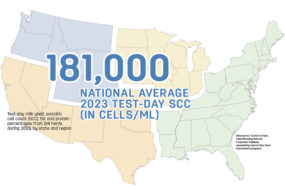Becoming a veterinarian hasn't been this exciting since Alf Wight came home to the Yorkshire Dales after World War II. Under the pseudonym James Herriot, Wight chronicled the medical revolution of antibiotics and steroids developed during that war, and the stunning changes they brought to the practice of animal medicine. Today's Virginia-Maryland Regional College of Veterinary Medicine professors and students – many of them inspired by the famous Herriot stories – are themselves leaping forward, working on new technologies and treatments to heal sick animals, and humans.
To facilitate these changes, the veterinary college is expanding its reach and its collaboration with several other Tech colleges. That includes new programs and curriculums and three new buildings, the first of which is scheduled to open in November. A second is under construction, and a third is in the planning stages.
As its facilities expand, the college hopes to increase and diversify its student body. Today, incoming classes average about 95 students, with about 80 percent of them being female.
With new facilities, college Dean Gerhardt Schurig said he hopes to increase incoming classes to about 120, and to boost the diversity of the student body by recruiting more blacks, among other groups.
With curriculum changes led by associate dean and microbiologist Jenny Hodgson, the school is developing several career tracks outside of traditional companion animal practice for doctor of veterinary medicine students.
The changes are preparing graduates for roles in animal and public health, as well as food safety, Hodgson said.
Schurig remembers the vet school's humble beginnings in a trailer on campus, and has seen it grow over the past 25 years into a 137,000-square-foot college and teaching hospital, and now is overseeing another rapid expansion.
A $14.1 million, 30,000-square-foot Veterinary Medicine Instruction Addition is set to open this month, and construction is under way on a $10.5 million, 16,000-square-foot Infectious Disease Research Facility.
Additionally, planning is under way for a joint Translational Medicine Building, which would expand the veterinary hospital and house veterinary research laboratories, as well as labs for researchers from the College of Agriculture and Life Sciences and the College of Science. PD
—From The Roanoke Times



